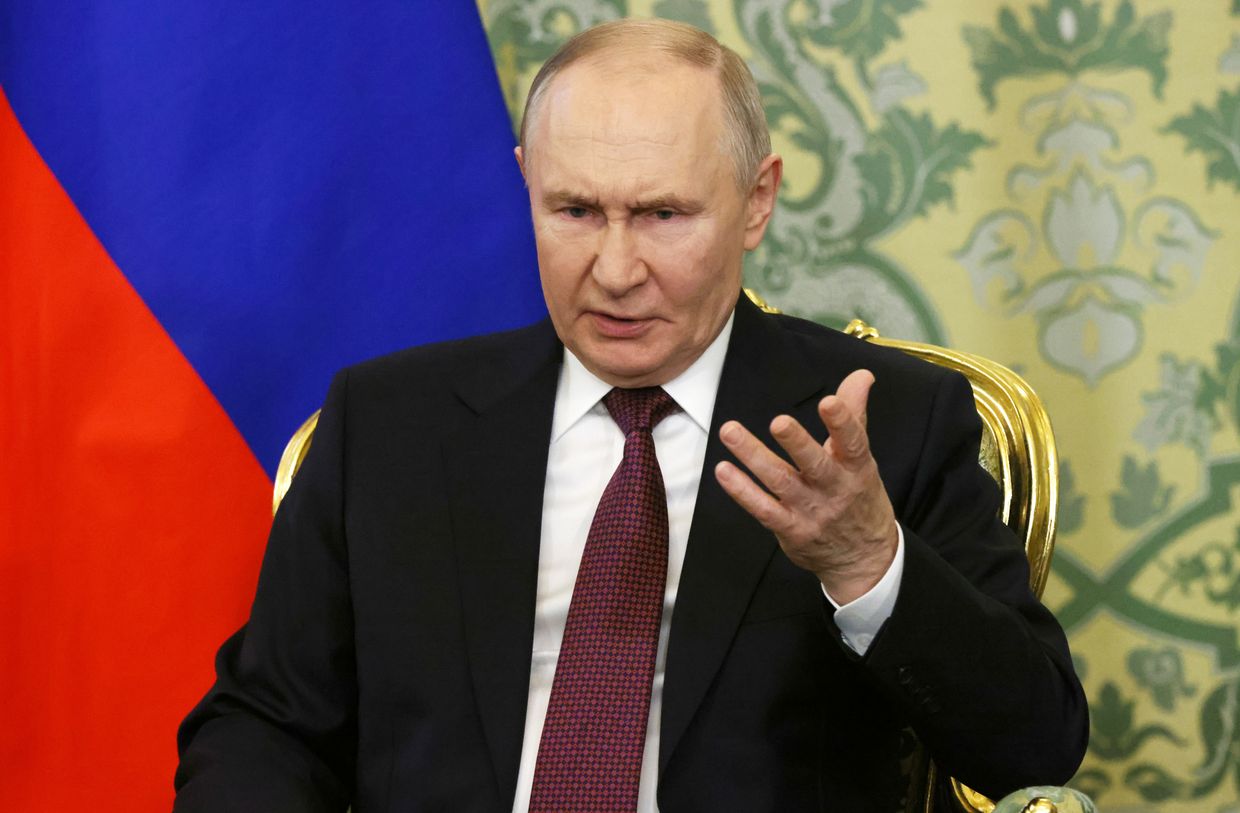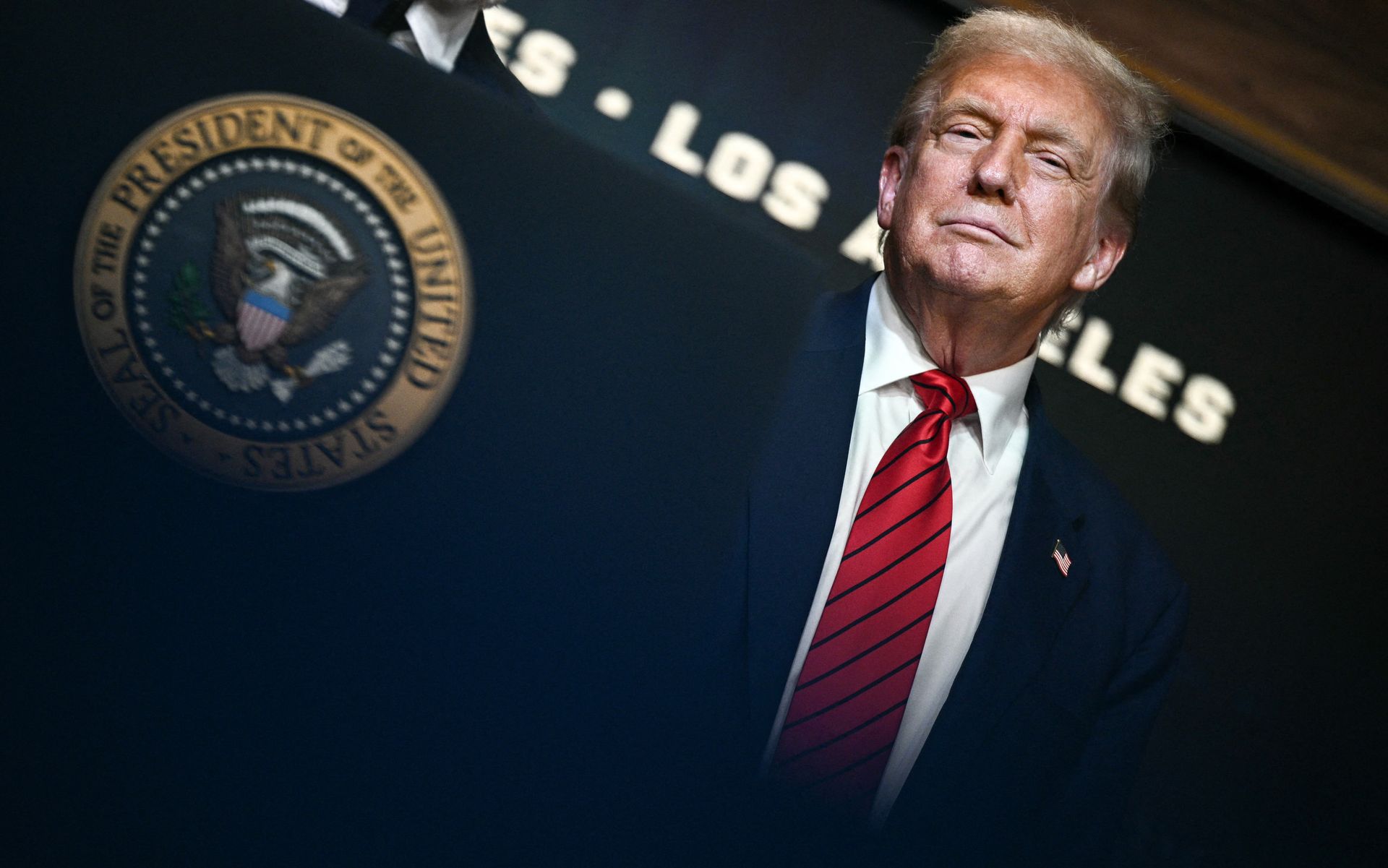
Best way to ramp up Western sanctions on Russia is to double down on their enforcement
Slapping new sanctions on India and China will turn up the heat on Russia — but doubling down on enforcement is what will really hit home
Russian President Vladimir Putin in Moscow, Russia, on July 31, 2025. (Evgenia Novozhenina / Pool / AFP via Getty Images)

Prentice Everett
In response to Russia's latest barbaric attack on July 30, which killed at least 32 civilians in Kyiv, President Donald Trump again threatened to extend sanctions to those who enable the war effort.
This is undoubtedly one way to ramp up pressure on Russia, but there are other options available to President Trump too. Exposing and closing other backchannels that the Kremlin uses to evade Western sanctions would pile significantly more pressure on Vladimir Putin and damage his military capabilities.
The success of sanctions, so far, has been mixed. In President Trump's own words, "I don't know that sanctions bother (Vladimir Putin)… I don't know if that has any effect."
So does it?
The Russian economy is undoubtedly showing signs of overheating. The Russian ruble depreciated, and stubbornly high inflation has necessitated a key interest rate of 18%.
However, pointing to this as evidence of effective sanctions is lazy. Unpicking causation is tricky, but the fiscal pressures of the war itself will have contributed significantly to these outcomes.
We should distinguish between sanctions placed on Russia's central bank assets and sanctions on trade with Russia. The former was undoubtedly a blow to Russia, freezing $300 billion that would otherwise have gone into Putin's war chest. But the effect of trade sanctions is both more contested and more costly to Western taxpayers, and so deserves additional attention.
Although they have played a significant role in decimating trade between Russia and the West, trade substitution and an oil price spike have dulled the impact.

Restrictions on Western exports of military hardware or dual-use components have complicated procurement for the Russian military, but again, they have workarounds. Western technology and components are either procured through the black market or substitutes are sourced from other countries, primarily China.
President Trump's proposed introduction of secondary sanctions would see countries that purchase cheap Russian oil, such as India, China, and Brazil, face sanctions of their own.
This may go some way towards improving effectiveness if it dissuades these countries from doing business with Russia.
Restricting Russia's access to funds and military hardware is a less costly way to give Ukraine the upper hand on the battlefield than simply supplying more kit.
But there are also other ways that Ukraine's Western allies can double down on enforcement to tackle the Kremlin's myriad other ways of evading the imposed restrictions.
For instance, shell companies based in Hong Kong, Turkey, and the UAE are used to help Russia acquire restricted "dual-use" technology such as microchips and sensors, which can be used in military equipment. A combination of diplomatic pressure, improved intelligence sharing, and more direct measures such as export quotas for transit countries can help stem this flow.
Another means of sanctions evasion is Russia's "shadow fleet", which now reportedly numbers over 1,000 vessels. This murky network of ships masks their allegiance through flags of convenience and ownership structures that are difficult to trace. At the same time, they allow Russia to evade sanctions on oil exports and have even become proxies for acts of sabotage.

As of the turn of the year, barely 10% of the fleet was under U.S., U.K., or EU sanctions, and only three ships were sanctioned by all three.
Thankfully, this is starting to change, with a further 100 ships sanctioned by the EU last month and the White House reportedly now considering additional "shadow fleet" sanctions of their own.
To prevent rogue vessels from slipping through the net, greater sanctions harmonisation is needed between the U.S., the U.K., and the EU. More expansive sanctions must be backed by stronger action on the detention and prosecution of suspicious vessels and crews to form an effective deterrent.
These solutions will clearly ask more of sanctions enforcement agencies. To deliver, they will need more resources, investment in innovation, and the political will to punish those responsible.
An economic case can be made for increasing investment: restricting Russia's access to funds and military hardware is a less costly way to give Ukraine the upper hand on the battlefield than simply supplying more kit. However, it may be politically difficult for cash-strapped governments to justify extra spending at the expense of public services.
This is where new technologies must be leveraged to maximise efficiency. Artificial Intelligence can spot suspicious behavior patterns in financial transaction data, making it easier and cheaper to identify criminals.
With the Russian economy already suffering, the West has an opportunity to press home its economic advantages and undermine Russia's military capacity. President Trump's threat of new, secondary sanctions is welcome, but there are other tools at his disposal. By closing off back channels for military components, exposing the "shadow fleet," and beefing up enforcement bodies, the West can hold Putin's feet to the fire.
Editor’s Note: The opinions expressed in the op-ed section are those of the authors and do not purport to reflect the views of the Kyiv Independent.












